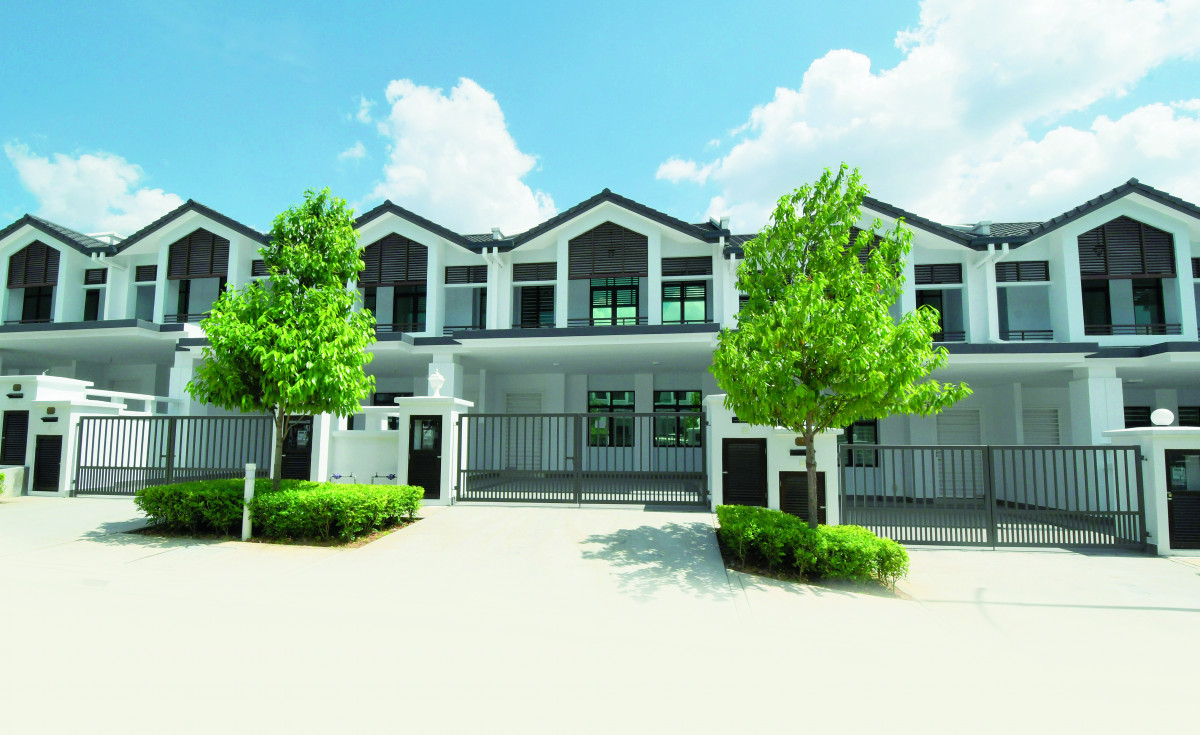
We used to mostly see strata projects as high-rise residences but these days, strata landed homes have been introduced as well. Many landed housing projects within new townships today are built as strata developments.
But do Malaysians truly understand what it means to live in a stratified or strata landed residential property?
While non-landed strata developments such as condominiums continue to gain popularity, strata landed residential schemes are also becoming a norm.
By definition, a strata scheme is a property development where the building or land is divided into parcels or boxes, and where the accessory parcels and common property are managed under a management system. Examples include flats, apartments, condominiums, townhouses and houses in gated-and-guarded communities.
According to Malaysian Institute of Property and Facility Managers (MIPFM) president Sarkunan Subramaniam, landed strata developments were previously commonly referred to as townhouses and cluster houses.
“However, today they may include terraced, semidee and detached houses within gated-and-guarded schemes, targeting the mid to upper income population segment,” he says, citing Desa ParkCity in Kepong, Kuala Lumpur which was launched in 2000 and has since become one of the most successful landed strata developments in the country.
However, living in a landed home in a strata development may take some getting used to.
EdgeProp.my spoke to Sarkunan and Burgess Rawson Malaysia managing director Wong Kok Soo for some pointers on what homebuyers should know about when living in a landed strata scheme.
1 It is protected under the SMA 2013 and STA 1985
Unlike landed homes with separate individual land titles that have their own boom gates set up by homeowners (where they self-manage and collect maintenance charges for the guard services), land parcels with strata titles are protected and governed by the Strata Management Act (SMA) 2013 and Strata Titles Act (STA) 1985.
The contribution to charges and sinking fund by all parcel owners in a strata scheme are mandatory under the SMA 2013. Furthermore, the Act provides an avenue for the parcel owners to resolve their disputes through the Commissioner of Buildings and the Strata Management Tribunal.
Unlike gated non-strata housing areas, owners cannot get away with not paying the maintenance fees as it is mandatory for every owner of a strata land parcel to do so.

2 There are restrictions on renovation works
Homebuyers tend to forget that what they have purchased is a land parcel, and not a landed property. Land parcels are regulated under SMA (in the Third Schedule) and it carries restrictions on renovation works. This means that an owner cannot change the facade of the building without prior approval from the Management Corporation (MC). The facade includes external windows, balconies, terraces, open areas, and all other visible parts of the building.
You cannot even change your compound’s main gate without approval. Developer specifications are usually for a 5ft steel gate and a solid timber door. For those who have paid a huge premium for corner units – expanding your parcel to accommodate more floor area is a no-no. Some corner lots come with huge plots of land and when the purchaser cannot do any extension, it may become extremely frustrating to the individual owner.
The management has the right to disallow any renovation works being done to the facade of the building or any extension of the building (deed of mutual covenants). This sometimes causes anguish among those who don’t understand the concept of living in a stratified property. Thus, forthright information by the developers at first disposal is vital here.
3 The management body is not responsible for maintenance and repair
While you cannot change anything to the facade of the home without the consent of the MC, the owner is expected to maintain the home.
Many strata land parcel owners expect the management body to maintain their houses such as repair the roof when it leaks or to repaint the exterior over time.
The fact is, however, they are not entitled to such benefits under the SMA.
This is unlike non-landed residences (sub-divided building or building parcel) where the management body maintains the common property, comprising the roof, external walls, building facade and common areas using the common funds in the maintenance account and the sinking fund account.
4 Service charge is based on land parcel size
Payment of service charges may also be misunderstood by owners. The share unit for a landed strata scheme is derived from the land parcel size whereby the end and corner lots usually pay higher service charges because of their bigger land sizes, even though the building size is typically the same as intermediate units.

5 MC can create by-laws on renovations
The SMA may allow flexibility for the MC to make additional by-laws pertaining to renovation.
This can be carried out through approval by way of special resolution at a general meeting, but the rule of passing and implementation is subject to receiving 75% of votes from those who attend the meeting, upon establishment of a quorum.
So it will not be easy, for instance, for the end/corner lot purchasers to receive approval from fellow purchasers, if the majority of those who attend the meeting are intermediate unit owners.
6 Easier to manage but may be more expensive
Managing a landed strata scheme is generally easier than strata non-landed developments, especially the physical aspects.
Landed developments are quite straightforward as they comprise less mechanical, electrical, and vertical services such as lifts, plumbing, fire system and telecommunications. Moreover, there are no inter-floor leakage issues and no common insurance requirements for landed homes. However, maintenance cost may still be high as landed strata developments have relatively larger development footprints and housekeeping cost can be higher as more manpower is required for gardening, cleaning, security, and other shared facilities.
7 Onus for fire insurance is on the owner
Homeowners also often expect the management to insure their strata landed homes against damage by fire. In a non-landed strata development, the onus to get the fire insurance coverage for the entire subdivided building including the individual building parcels is on the management body but for landed strata schemes, the fire insurance coverage for the property must be obtained by the parcel owner.
This story was written by Natalie Khoo and first appeared in EdgeProp.my pullout on Nov 9, 2018. Get the weekly pullout for FREE on our mobile app!
.....
We've got all the right tools to help you find your dream home!
Browse new and exclusive listings
Check past transacted data on any property
Calculate if you should Buy or Rent
Get a free Credit Report before applying for housing loans




